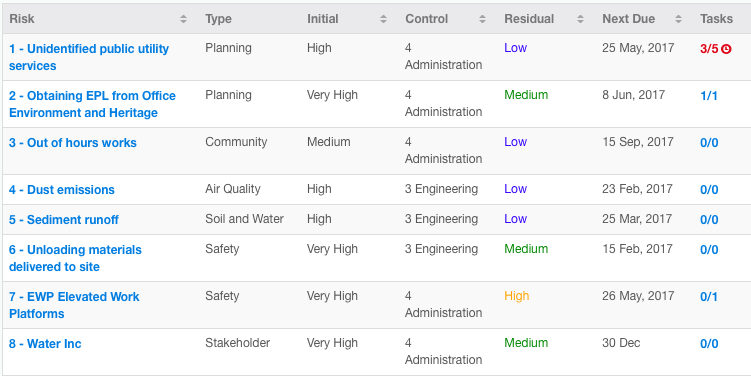Back to Risk
Managing Risk
Overview of managing risk in Toolbox
Tags:
Compile your risk register in Toolbox for active risk management that goes beyond the spreadsheet.
The Risk module is optional in Toolbox, so if you don't see Risk in your project, ask your project manager about adding it.
Toolbox follows a standard approach to Risk Management: * Establish the context * Identify the risks * Analyse the risks * Evaluate the risks * Treat the risks * Monitor and Review
Each risk you identify is added to Toolbox, and together they make up your risk register:

You can customize the risk 'Types', the 'Probability', 'Impact' and 'Rating' menu choices, as well as the risk matrix you use to assign a risk rating.
Making it meaningful
Risks in Toolbox can tell the whole story by linking the pieces together.
For example, a Safety Incident occurs and leads you to identify a Risk.
Create a two-way link between them under "Related Items".
Readers of the Issue can see you are following through. Readers of the Risk understand it is real.

Resolving the Issue and controlling the Risk lead to changes in a Procedure. Link them together. Readers of the procedure now understand the reasons behind the changes, and are more likely to follow the revised process.

To ensure the controls are effective, you begin a monitoring program with regular inspections. Link the Inspection Schedule to the Risk. Workers responsible for the monitoring tasks can see why they are important. Readers of the Risk can be confident it's under control.